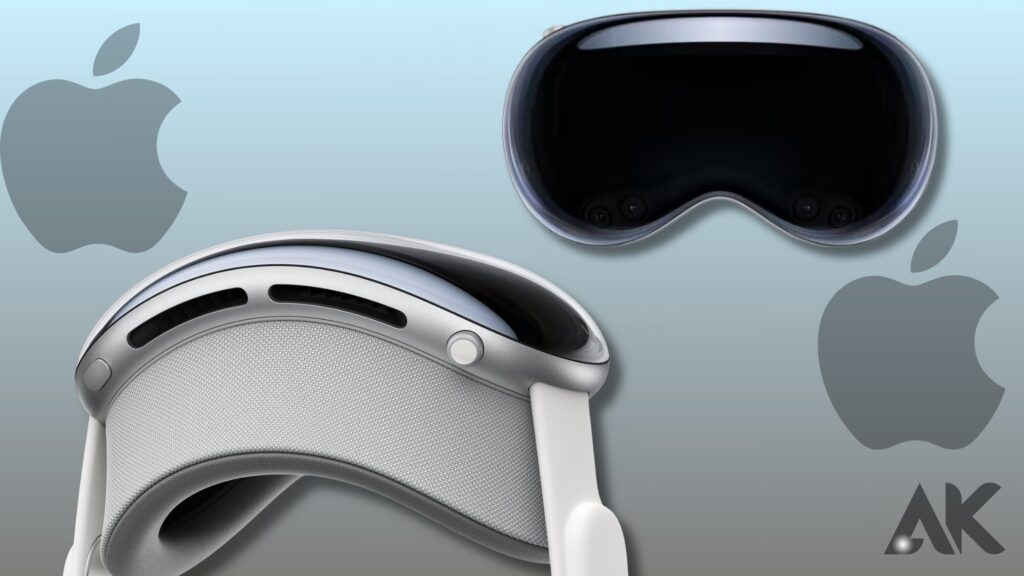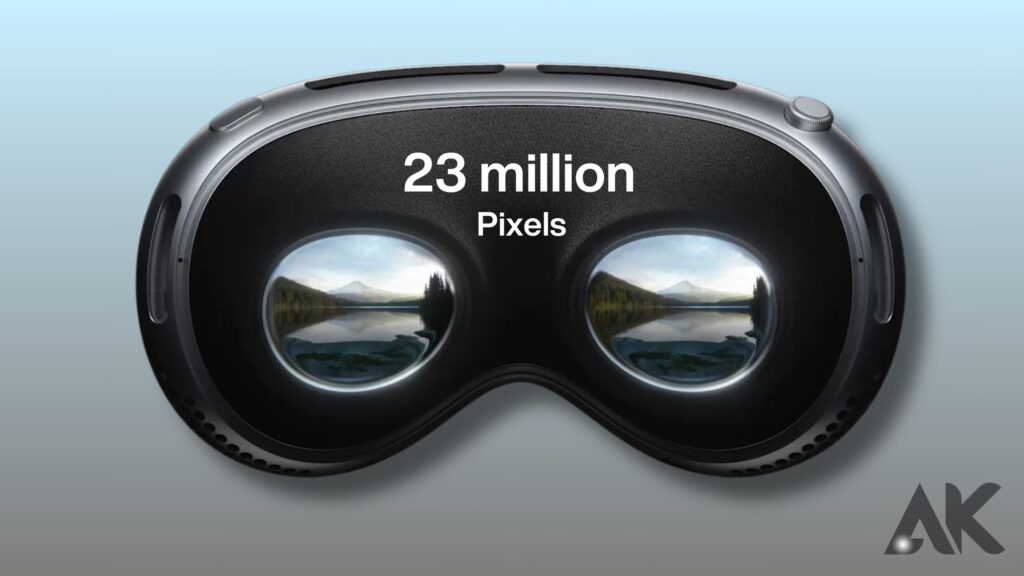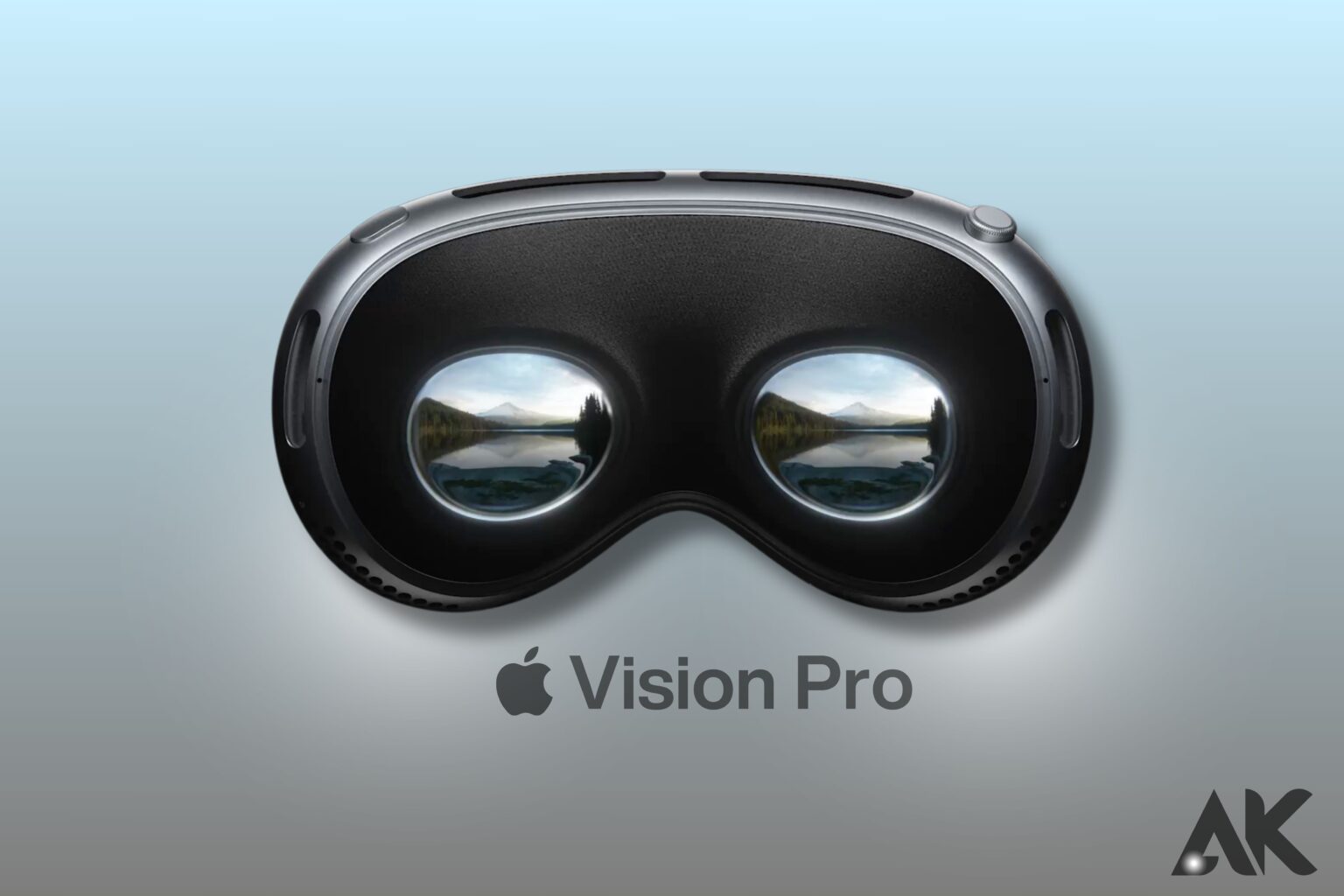You have reached a thorough analysis of the ground-breaking resolution technology that Apple’s Vision Pro employs. Designed to reimagine visual clarity, this groundbreaking innovation is the subject of this illuminating exploration. The story of this state-of-the-art technology is told from its beginnings to its incorporation into Apple’s varied product range in a seamless manner. Come explore the secrets with us as we unveil the unparalleled clarity of Apple’s Vision Pro Resolution Technology.
Apple Vision Pro Features and Specifications

- The Apple Vision Pro takes advantage of curved glass.
- A silicon chip number R1 has been used.
- The device’s battery life is 2 hours.
- Utilization of optical identification
- It has been used with the VisionOS OS.
- The display of the Apple Vision Pro is a dual-micro OLED screen with 23 million pixels.
- Main camera with high-speed
- Hand tracking with a downward camera
- IR light source and secondary camera
- In addition, TrueDepth cameras and a LiDAR scanner are available.
- The business claims that these twelve cameras
- There are five different sensors.
- works with six microphones.
- Instantaneously displays images
- Multi-App 3D Engine
Vision Pro’s incredible pixel density

The screen on the Apple Vision Pro is top-notch. It was discovered that the headset has the densest twin MicroOLED panels ever, with 3,386 pixels per inch (PPI), according to iFixit’s second headset deconstruction video and blog. Though it’s close, it doesn’t quite qualify the Vision Pro as 4K. (According to iFixit, 3,840 is the consumer standard for 4K UHD.) One of the main reasons the Vision Pro is so expensive is because of the advantage of MicroOLED technology.
This virtual reality headset is head and shoulders above the competition. According to iFixit, the Meta Quest 3 has a pixel density of roughly 1,218 ppi, while the HTC Vive Pro has an even lower density of around 950 ppi. On top of that, the typical phone will only cost about $100. (iFixit points out that the 15 Pro Max has a ppi of 460.)
However, iFixit notes that pixels per degree are a crucial metric; when your horizontal viewing angle is low enough, your eyes will be so close to the screen that objects will seem pixelated when you glance to the side of the screen. According to iFixit, the Vision Pro has an estimated ppd of around 34, which is lower than the 94 ppd seen on a typical 65-inch 4K TV at 6.5 feet away and the 95 ppd seen on an iPhone 15 Pro Max at a foot away.
Apple Vision Pro Review
Just thirty minutes into using Apple Vision Pro, I can see where computer technology has come from, and it looks exactly like what Apple is claiming it will alter in the future of technology.
It’s not enough to just say that it will alter global dynamics; what matters is precisely how these dynamics play out.
Apple has released stunning augmented reality headgear with a built-in camera that allows users to observe their surroundings using the Video Pass function. What sets it apart is its video pass-through capability.
It is a delightful sensation to wear this lustrous gadget composed of metal, glass, and fabric. Just talking about it after you’ve run it gives you the impression that you’ve entered a parallel universe where your eyes and hands control everything. This Apple innovation improves the aesthetic quality of social media applications.
This uses a plethora of sensors—roughly twelve in total—to track our every motion and respond to our eye, palm, and finger movements for control.
Looking at picture albums in Apple Vision Pro makes everything appear so much more real as if the subject or item in the shot were standing before us. It’s almost emotional, and it’s a great sensation.
Panoramas and 180-degree photographs are a whole other ballgame. It seems as if the whole of Asia is really around us when we use this Vision Pro to view things in three dimensions. Seeing prehistoric creatures brings up a new, scary image for which there is no explanation.
It may be a lifesaver if you use it mostly for playing games and watching films. Compared to viewing a movie at Cinema Hall, this Vision Pro is far more comfortable since you can customize the frame size to your liking. Amazing things can happen when you put your mind to it.
Conclusion
Apple’s Vision Pro Resolution Technology is a revolutionary advancement designed to redefine visual experiences. The device features a dual-micro OLED display with 23 million pixels, a high-speed main camera, a downward camera for hand tracking, an IR illuminator and side camera, a LiDAR scanner, and TrueDepth cameras. It has five sensors, supports six microphones, and can display images within 12 ms. The Vision Pro has the highest pixel density of 3,386 pixels per inch (ppi), making it a costly VR headset. The device also has a video pass-through feature, allowing users to control the device by understanding their gestures. The device is particularly useful for movies and gaming, as it allows users to adjust frame sizes.
FAQS
Is Apple Vision Pro 4K per eye?
More than 4K displays per eye
There are 23 million pixels on the Apple Vision Pro’s micro-OLED screens. With this, you get a resolution that’s better than 4K for both eyes, which is more than any other headset out there.
What is the quality of the display in Vision Pro?
I feel like Tony Stark because of how intuitive it is and how it tracks my eyes. After a few hours of use, I feel like I’m back in the stone age when I use my laptop or phone. True 4K resolution is used, and the “screen door” effect is not noticeable. The video games and films are crystal clear.

